In the intelligent transformation of cars, Apple does not lose Tesla at all.
Editor’s note: This article is from the micro-channel public number “car stuff” (ID: chedongxi) , Author: James Xiaohan.

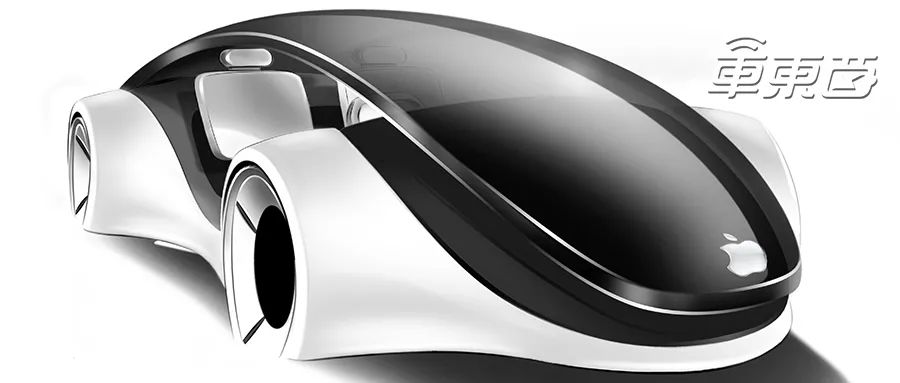
Last month, Apple Inc. (hereinafter referred to as “Apple”) released the first beta version update of iOS and iPadOS 13.4. Some media discovery systems include an API called CarKey. This feature is expected to enable the use of iPhone or Apple Watch to unlock, lock or activate the car in the future.
The release of this API has brought the topic of Apple’s car construction to the surface again.
Beginning in 2015, the industry rumored that Apple launched the Titan program to build cars, but it was subsequently confirmed that it has transitioned to the development of autonomous driving systems. It seems that Apple has abandoned the idea of building cars.
After entering 2019, Apple’s autopilot-related information is scarce, but it has continuously revealed car-related patent technologies-the number of patents applied for in 2019 is almost one of the number of car-related patents obtained in previous years. with.
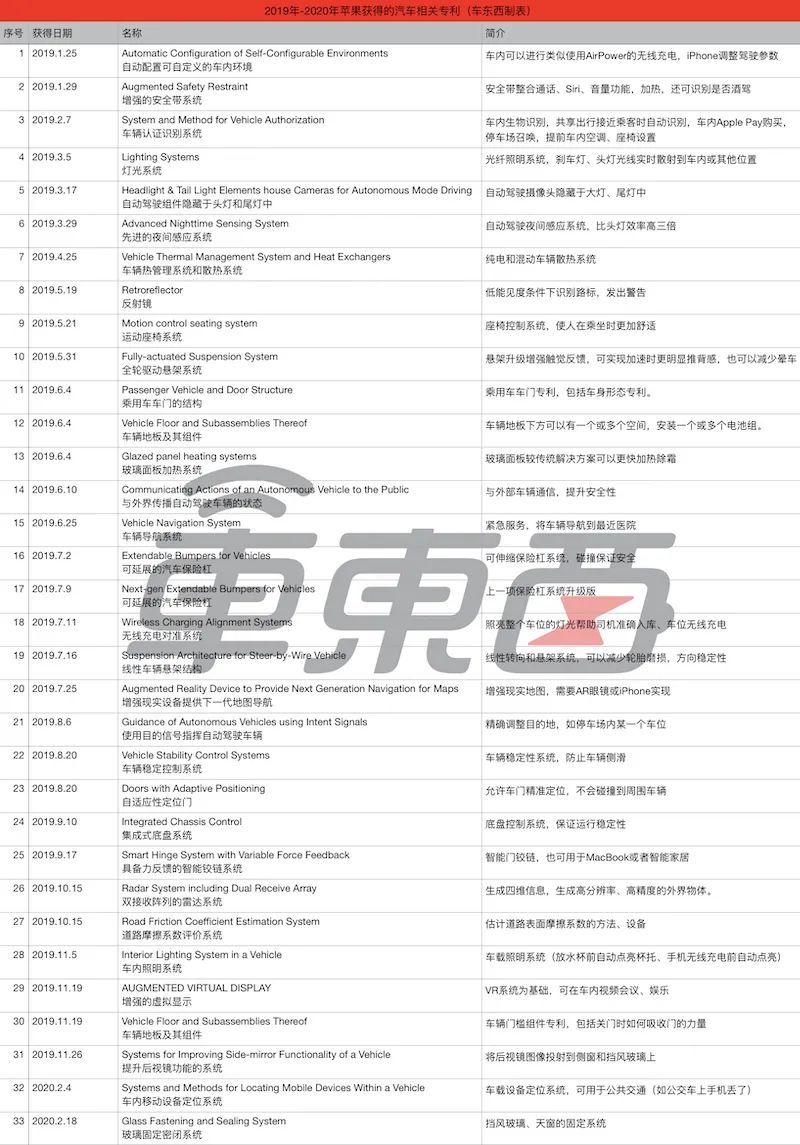
▲ Apple related patents obtained since 2019
Car stuff summarizes more than 30 patents Apple has obtained in the automotive field since 2019, involving autonomous drivingDriving, AR navigation, in-vehicle VR, in-vehicle payment, biometrics, intelligent hardware, out-of-vehicle interaction, virtual rearview mirrors and many other fields.
The more creative patents include turning the seat belt into a touchpad for some on-board functions, using smart doors to prevent accidents when opening the door, and projecting the mirror image to the side windows.
Judging from the continuously exposed patents of Apple cars, Apple still seems to intend to build its own cars, and it must be self-driving cars. From these patents, we can roughly see what kind of self-driving car Apple is going to build.
Thousands of people have been secretly researched and developed for many years. Apple’s mysterious carmaking road
The earliest news about Apple’s car dates back to 2014. In March of that year, after Apple released Carplay software at the Geneva Motor Show, it began to conduct substantial research on cars.
In 2015, there were media reports that thousands of people in Apple’s automotive projects were involved in research and development. At the same time, Apple has been encouraging Tesla employees to join Apple.
This year, Apple has recruited excellent talents from major car companies around the world, including Tesla, Chrysler Automobiles, and Volkswagen Group. Among them is Chris Porritt, former Tesla vice president. He currently holds important positions in Apple’s Titan project.
In addition, in 2015, Apple also hired self-driving personnel from companies such as Nvidia and Waymo to help Apple develop autonomous driving systems. Apple also “digged” at least three battery experts from Samsung to focus on power battery technology.
In an interview that year, Tesla CEO Elon Musk joked that Apple was the “grave” of Tesla, because Apple recruited staff were “fired” by Tesla.
In 2016, Apple’s Titan project underwent a major transformation.
According to the foreign media “Wall Street Journal”, Apple rehired Bob Mansfield, former senior vice president of hardware at Apple, in July of that year, and he took over the Titan car project.
During his tenure as Apple’s senior vice president of hardware, Bob Mansfield led the team in designing products such as the MacBook Air and MacBook Pro. After rehiring Bob Mansfield, Apple has also shifted from developing automotive hardware to developing autonomous driving systems.

▲ Bob Mansfield, former senior vice president of Apple hardware, is now chairing the development of autonomous driving technology.
In 2017, Apple was approved to test autonomous vehicles on public roads in California.
According to foreign media Bloomberg, a Lexus RX450h driving from Apple’s headquarters building at that time was equipped with Velodyne’s 64-line lidar with the longest detection range, and at least two radars and two cameras.
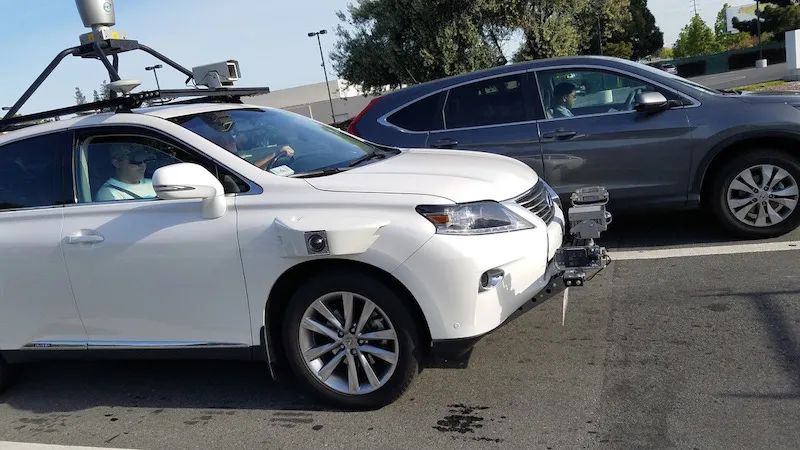
▲ Lexus RX450h used by Apple for autonomous driving tests
Apple CEO Cook said in an interview with Bloomberg Television: “Apple is focusing on autonomous driving systems, but may not develop real hardware products.”
At that time, people speculated that Apple might want to launch a self-developed autonomous driving system and provide ride-sharing services similar to Uber.
In 2018, Apple’s self-driving tests are continuously upgraded and scaled up.
Although Apple has not publicly acknowledged that it is testing autonomous driving systems, Apple ranked third in California’s number of autonomous driving licenses. In that year, a total of 70 vehicles were allowed to be tested on the road, second only to GM’s Cruise The company has 175 vehicles and 88 self-driving test vehicles from Alphabet-owned Waymo.
In 2019, the information about Apple’s self-driving vehicles is gradually decreasing, and even the news that Apple has laid off 200 people in the autonomous driving department is the only significant news is that Apple has acquired Drive.ai Autonomous Driving Company.
At the same time that information about autonomous driving is decreasing, Apple’s patents for cars are constantly being exposed.
From the number of auto-related patents Apple obtained in 2019, it is almost the sum of the number of auto-related patents obtained in 2017 and 2018.
This shows that Apple hasn’t given up on building a car.
Since 2019, Apple has obtained a total of 30 automotive-related patents, which are divided into four areas: autonomous driving, people-vehicle interconnection, car body structure optimization, and in-car entertainment. For example, technology that enhances the night performance of sensors, AR navigation, vehicle VR, virtual rearview mirrors and other technologies.
Combining theseFrom the content of the patent, Apple’s car-making path is just a way from the previous method of making passenger cars to consumers, and it has turned to a combination of car-making and its own self-driving technology-that is, directly building unmanned cars .
Car stuff below will introduce some patents related to cars obtained by Apple. Let us take a look at the big tricks Apple has made on cars.
Solving the problem of autonomous driving: improving sensor performance at night
1. Enhance the performance of the autonomous driving sensor at night
In the daytime, the autonomous driving sensor can rely on sunlight to identify objects around the vehicle. However, at night, the mixture of lights, street lights and other light sources makes the road conditions more complicated, and the autonomous driving sensor will have difficulty exerting its advantages.
For example, under different color temperature lights, objects reflect different colors; without lights or weak lights, object recognition will be more inaccurate.
However, in this Apple patent, the accuracy of the sensor’s recognition at night will also be greatly improved.
Because the brightness and angle of vehicle lights are restricted by law, it is not possible to achieve longer distance exposure. Therefore, three systems, night vision cameras, infrared detectors, and long-wave infrared sensors (LWIR) are required to work together. When used together, the recognition efficiency at night will be three times higher than that of traditional headlights.

▲ Apple’s patent for self-driving at night
First, use a camera to detect an object about 60 meters in front of the vehicle, and the detection angle is about 120 degrees. This can determine the type and movement law of nearby objects, so that the autonomous vehicle can keep driving safely.
Then, use a near-infrared sensor to detect objects at greater distances. The detection range can reach 200 meters, but the detection range is only about 30 degrees.
Finally, a long-wave infrared sensor is needed. This sensor can detect the heat radiation generated by objects around the vehicle. If a sensor array is used for detection, it can reach a 180-degree field of view.
It can be seen in Apple’s patented picture that the vehicle can improve the safety of vehicle operation with the cooperation of three sensors.
During nighttime driving, due to the limited brightness and coverage of traditional car headlights, nighttime traffic accidents are frequent. If it is possible to rely on the automatic driving system for detection and identification, it will be of great significance to improve night driving safety.
In addition, in May 2019, Apple also announced a patent for identifying road signs in harsh environments. This patent can accurately identify road signs in haze and snowstorms, and can also improve driving safety.
2. Communicate with surrounding vehicles and pedestrians
When driving a traditional car, people usually send signals to other vehicles through whistle and light control. However, in autonomous vehicles, it is difficult to achieve information transmission in these two ways.
Apple acquired self-driving company Drive.ai in June 2019 and hired engineering and design staff from the company.
In this company’s self-driving vehicles, there are small displays on the front and back. When a car is polite to a pedestrian in front of a crosswalk, the display will display a prompt message to give a text prompt to the rear vehicle to ensure pedestrian safety. The display on the front of the vehicle will also show reminders to give pedestrians a more sense of security.
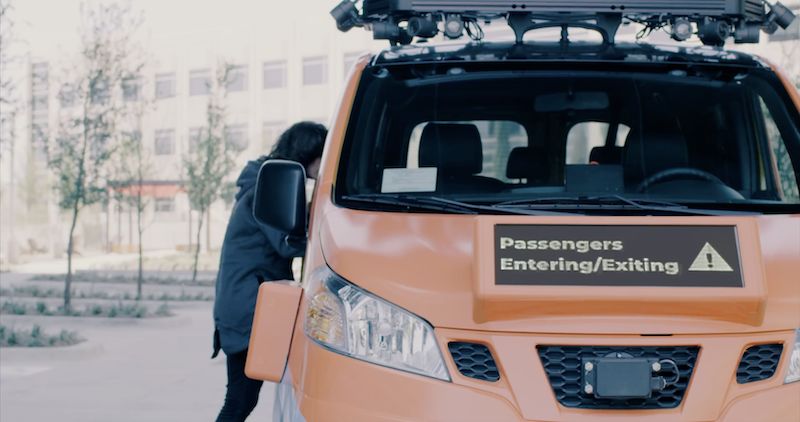
▲ Drive.ai self-driving vehicles will display the status of the vehicle with graphics and text around the vehicle
However, Apple wants to do more.
In addition to accurately identifying surrounding vehicles and transmitting visual and auditory information, different information can also be transmitted on specific road sections. For example, on school roads, vehicles will give pedestrians simpler visual feedback to suit students and children.
Also, this feature gives different feedback in different situations. In an emergency, this system can increase the volume, change the light and color of the display, or keep the prompt message blinking to make the driver of the surrounding vehicle pay attention to the prompt message.
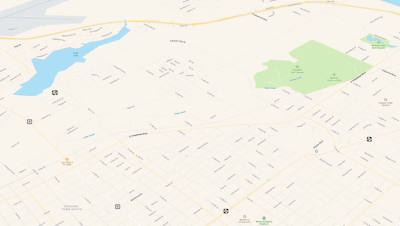
▲ Apple announced at WWDC 2019 Global Developers Conference that the map service details will be greatly improved
If this function is to be realized, it must rely on accurate map services.
Apple has done just that. Ping in 2019For the next few years, the process has not been smooth, but with Apple’s research and development capabilities, something different has been made, which will also accelerate the wave of the four transformations of the automotive industry.